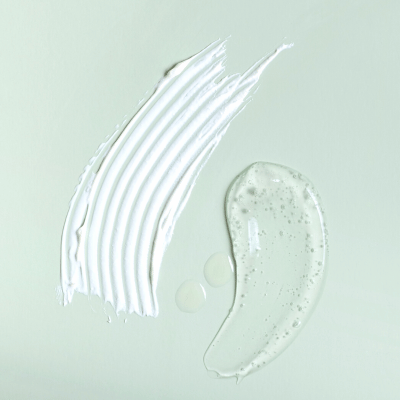WHY A CHEMICAL PEEL ISN'T AS SCARY AS IT SOUNDS

Why a chemical peel isn’t as scary as it sounds
Let’s be honest. When you think of the words ‘chemical peel’, the scene of Samantha Jones walking through New York City with a red raw face comes to mind, right? Well, we’re here to rewrite your history with them!
Whoever gave chemical peels their name is doing the treatment a serious disservice because despite the science experiment gone wrong name, this resurfacing treatment is a must-try for many skin types and concerns. In fact, we think it could be the treatment your skin has been searching for!
Today, we’re talking all things chemical peels, how they work and why you should add them to your must-try treatment list.
Let’s get started by actually explaining what a chemical peel is. A chemical peel, or skin peel, is a resurfacing treatment that uses natural acids, carefully chosen chemicals and other skincare formulations to cause a reaction within the skin. This reaction’s goal is to give your skin’s natural cell renewal process a kickstart; where old, dead, and dull skin cells are sloughed away to make way for freshly stimulated ones.
Whilst many forms of exfoliation will do this job for us, a chemical peel takes things a few steps further and works much deeper down where we can create real change within the skin. The acids and chemicals chosen for the peel itself will ultimately target different concerns, with many addressing more than one at the same time. Who doesn’t love a multitasking treatment?!
The most common skin concerns that can be treated with a series of chemical peels include sun damage and pigmentation, the signs of ageing, acne, and breakouts, scarring and uneven skin tone or texture. What all these skin concerns have in common is that despite their individual dysfunctions, they each benefit greatly from resurfacing and can ultimately appear less prominent or pop up less frequently thanks to regular cell renewal.
The number of peels recommended is dependent on the skin concerns you’re addressing, the strength of the peel itself and the type of ingredients utilised during the treatment. As a general rule of thumb, many will add a seasonal peel to their professional treatment list to cater to the changes in season and give their skin a boost of what it needs most in that moment.

When it comes to chemical peels, they’re not all as super strength as their name suggests. Now, we’re not saying that aren’t some ultra-high-strength chemical peels out there, because there totally is but for general skin maintenance, you don’t need to look like a lobster for days on end. In fact, some peels won’t even cause a peeling effect!
Chemical peels are generally divided into three categories: light (or superficial), medium and deep. As their names suggest, these indicate the strength of the peel and how intense the formulation is working for the skin. Some peel strengths may use the same ingredients, but their potency percentage will be greater or smaller.
For those addressing superficial skin concerns, such as acne or skin brightness, or those with more reactive skin, a light peel could be the perfect choice. Many light peels harness ingredients such as lactic acid, fruit enzymes, or salicylic acid which are ideal for these skin concerns and a more sensitive skin type.
A medium peel, penetrate deeper than a light peel and are traditionally used for address fine lines and wrinkles, scarring and more deep seeded pigmentation. These peels are going after that supercharge in cell renewal to resurface and renew the skin for long-term change. Medium strength peels will regularly hero multiple ingredients such as retinol, glycolic acid, fruit acids, high strength antioxidants (like Vitamin C) and peptides to kickstart skin results from your first treatment.
A deep peel is for those chasing dramatic results. This is where you’ll notice your downtime may increase and the ‘peel’ in ‘chemical peel’ comes to life. For many deep peels, only one treatment is required so it’s safe to say they pack a punch!
For deep lines and wrinkles, stubborn pigmentation and significant scarring, this high-strength option may be a great fit for you. These peels hero many of the ingredients featured in light and medium strength peels but at ultra-potent percentages which must be delivered by a professional. This is not your at-home experiment kind of stuff!
If you’re new to chemical peels, don’t be afraid to start with a light one and see how your skin tolerates and responds to the treatment. Your skin will appreciate the slow and steady approach because let’s face it, it’s much easier to work your way up than to rectify the effects of a too-potent peel.
What we love most about chemical peels is that they’re not limited to your salon treatment room! There is an abundance of at-home peels that you can incorporate into your skincare routine that are matched to your individual skin concerns.
Some products, such as the Hydropeptide Power Peel Pads have made getting started with peels so easy as the ingredients don’t need to be washed off! You simply apply to cleansed skin and follow with your regular skincare routine.
For more of an at-home skin treatment experience, we can’t go past the Sircuit Skin Pumpkin Enzyme Peel for seriously enhancing skin radiance or the Priori Natural Enzyme Peel and Masque for a weekly deep skin detoxification.
We hope we’ve been able to shed some light on the world of chemical peels and showcase that this incredible treatment is so much more glow than it is gloom! If you’d like to try a peel for yourself, explore our collection of at-home treatments available online now.
Not sure what products are best suited to your skin? Complete our free Matrix Program Online Skin Assessment Tool for a personalised skin care routine and 2 skin tips delivered to your inbox.






 Webential
Webential